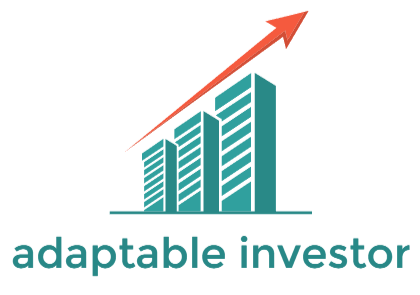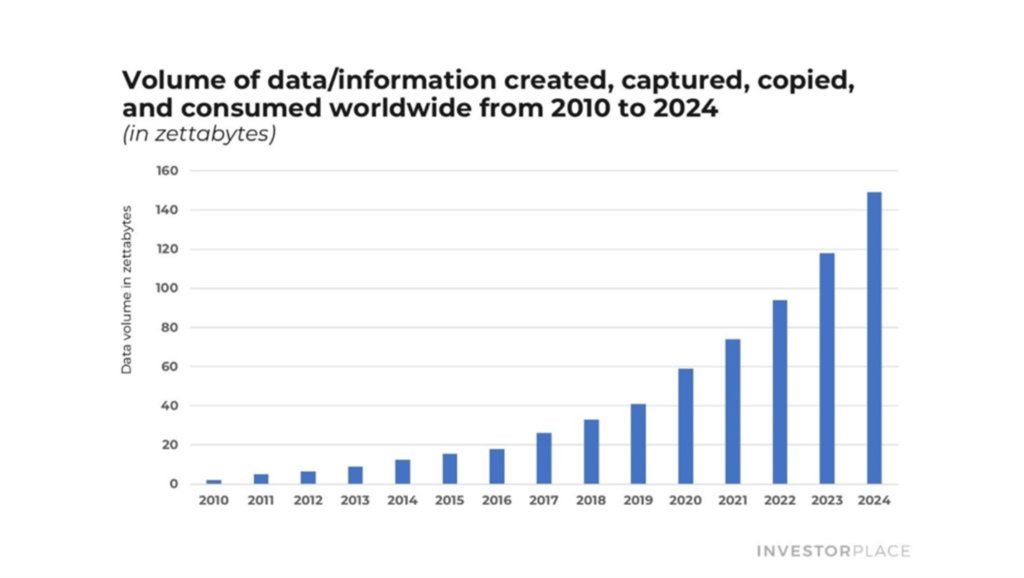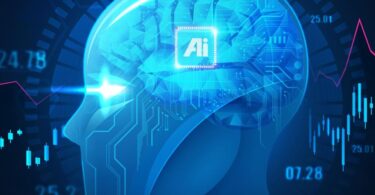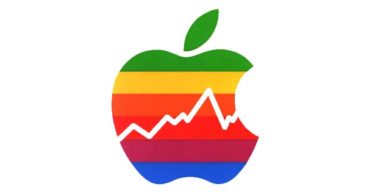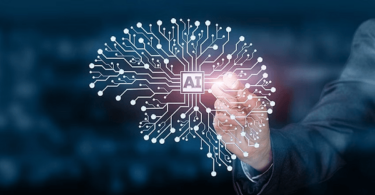New incredibly accurate A.I. system predicts Tesla's stock price
Sponsored
Just recently TradeSmith, one of the world's most cutting-edge financial tech companies, rolled out a brand-new A.I. predictive system called An-E which stands for Analytical Engine.
TradeSmith is also giving folks a “sneak peek” of some of An-E's predictions, so you could see what it's capable of for yourself.
Here's one of them…
This chart of a company called Autodesk:

Here you can see a red X. That's when An-E made its prediction about where Autodesk's stock price would go…
And those blue circles represent An-E's predictions two weeks, one month, and two months into the future.
Well, here's what actually happened with Autodesk's stock over the next two months…
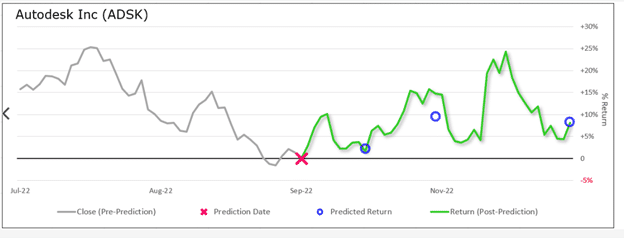
As you can see, An-E's forecast is almost spot on…
If you would have invested based on its predictions… you would have made nearly 15% in a month.
Here's another one…
This is Carnival, the cruise line company.

Again, we see the blue circles representing An-E's predictions…
And here's how Carnival's stock played out…

And those are just two examples from a test they ran. TradeSmith has dozens more, including a prediction An-E just made about Tesla's stock.
You can get all the details behind An-E, including its latest prediction about Tesla by going here.
I think you'll be surprised by where An-E says Tesla's heading.
Artificial intelligence stocks will power significantly higher over the next decade
- As we’ve sprinted into this “Smart World,” the amount and speed of data that AI algorithms have access to has exploded. And it’s making those AI algos more capable than ever.
- Globally, the world produces about 2.5 exabytes of data per day today. It’s expected that number will rise to 463 exabytes by 2025 (185X higher).
- As the volume of data produced daily soars more than 185X over the next five years, ML and NLP models will get 185X better (more or less), and AI machines will get 185X smarter (more or less).
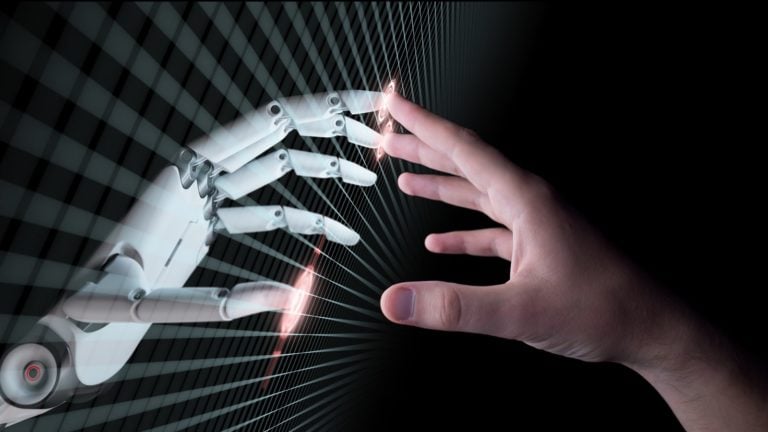
Everyone is buzzing about artificial intelligence (AI) these days.
And it may even seem like the technology emerged out of thin air to shock the world. But the truth is that the AI Revolution we’re witnessing right now is the culmination of 70 years’ worth of research.
We can find its roots in October 1950. At that time, Alan Turing, the genius who cracked the Enigma code and helped end World War II, had just introduced a novel concept.
It was called the “Turing Test.” And it aimed at answering the fundamental question: Can machines think?
The world laughed. Machines — think for themselves? Not possible.
However, the Turing Test set in motion decades of research into the emerging field of artificial intelligence.
This research has been conducted in the world’s most prestigious labs by some of the world’s smartest people. Collectively, they’ve worked to create a new class of computers and machines that can, indeed, think for themselves.
Exponential Progress
Fast forward 70 years.
AI is everywhere.
It’s in your phones. What do you think powers Siri? How does a phone recognize your face?
It’s in your applications. How does Google Maps know directions and optimal routes? How does it make real-time changes based on traffic? And how does Spotify create hyper-personalized playlists or Netflix recommend movies?
AI is on your computers. How does Google suggest personalized search items for you? How do websites use chatbots that seem like real humans?
As it turns out, the world shouldn’t have laughed back in 1950.
The great Alan Turing ended up creating a robust foundation upon which seven decades of groundbreaking research has compounded. Ultimately, it resulted in self-thinking computers and machines not just being a “thing” — but being everything.
Understanding AI
AI is really just a catch-all term for machine learning (ML) and natural language processing (NLP) models that learn from themselves and get better and smarter over time.
Those models are entirely informed by data.
Basically, the more data they have, the more they can learn, the better the models get, and the more capable AI becomes.
Indeed, in the AI world, data is everything.
Think of it this way.
The global volume and granularity of data is exploding right now. That’s mostly because every object in the world is becoming a data-producing device.
Over the past 20 years, we have seen a significant shift toward the “Smart World.” Dumb phones have become smartphones, and dumb cars have become smart cars. Dumb apps have become smart apps, and dumb watches have become smartwatches.
These devices have all begun to generate large amounts of data, like phone usage data, in-car driving data, consumer preference data, and fitness and activity data.
As we’ve sprinted into this “Smart World,” the amount and speed of data that AI algorithms have access to has exploded. And it’s making those AI algos more capable than ever.
Why else do you think AI has started popping up everywhere in recent years? It’s because 90% of the world’s data has been generated in the last two years alone.
AI’s Explosive Acceleration
And guess what? The world isn’t going to take any steps back in terms of this “smart” pivot. No. We love our smartphones, smart cars, and smart watches too much.
Globally, the world produces about 2.5 exabytes of data per day today. It’s expected that number will rise to 463 exabytes by 2025 (185X higher).
More data. Better ML and NLP models. Smarter AI.
Therefore, as the volume of data produced daily soars more than 185X over the next five years, ML and NLP models will get 185X better (more or less), and AI machines will get 185X smarter (more or less).
And as my friends in the AI and robotics fields like to remind me: Most things a human does, a machine will be able to do better, faster, and cheaper. If not now, then soon.
Given the advancements AI has made over the past few years with the help of data – and the huge flood of data set to come online over the next few years – I’m inclined to believe them.
ChatGPT is just the start.
Eventually – and inevitably – the world will be run by hyperefficient and hyperintelligent AI.
I’m not alone in thinking this. Gartner predicts that 69% of routine office work will become fully automated by 2024. And the World Economic Forum anticipates that robots will handle 52% of current work tasks by 2025.
The AI Revolution is coming – and it’s going to be the biggest revolution you’ve ever seen in your lifetime.
The Final Word
Now, the question remains: What’s the best way to play the AI Revolution?
Lucky for you, we have the top AI stocks for you to buy today.
We’ve put together the ultimate portfolio of the top five AI stocks to buy right now to potentially turn thousands into millions over the next few years.
#1 AI stock trading for $3
Sponsored
AI is by far the biggest tech investing trend of 2023.
But Ross Givens says the #1 artificial intelligence stock is NOT Microsoft, Google, Amazon or Apple.
Nope – his research is pointing to a tiny, under-the-radar stock that's trading for just $3 right now…
And could soon shoot to the moon, handing early investors a windfall.
This company already has 98 registered patents for cutting-edge voice and sound recognition technology…
And has lined up major partnerships with Honda, Netflix, Pandora, Mercedes Benz and many, many others.
So if you missed out on Microsoft when it first went public back in 1986…
This could be your shot at redemption.
Click here now for the full details of this $3 stock that's set to rocket in the AI revolution…
